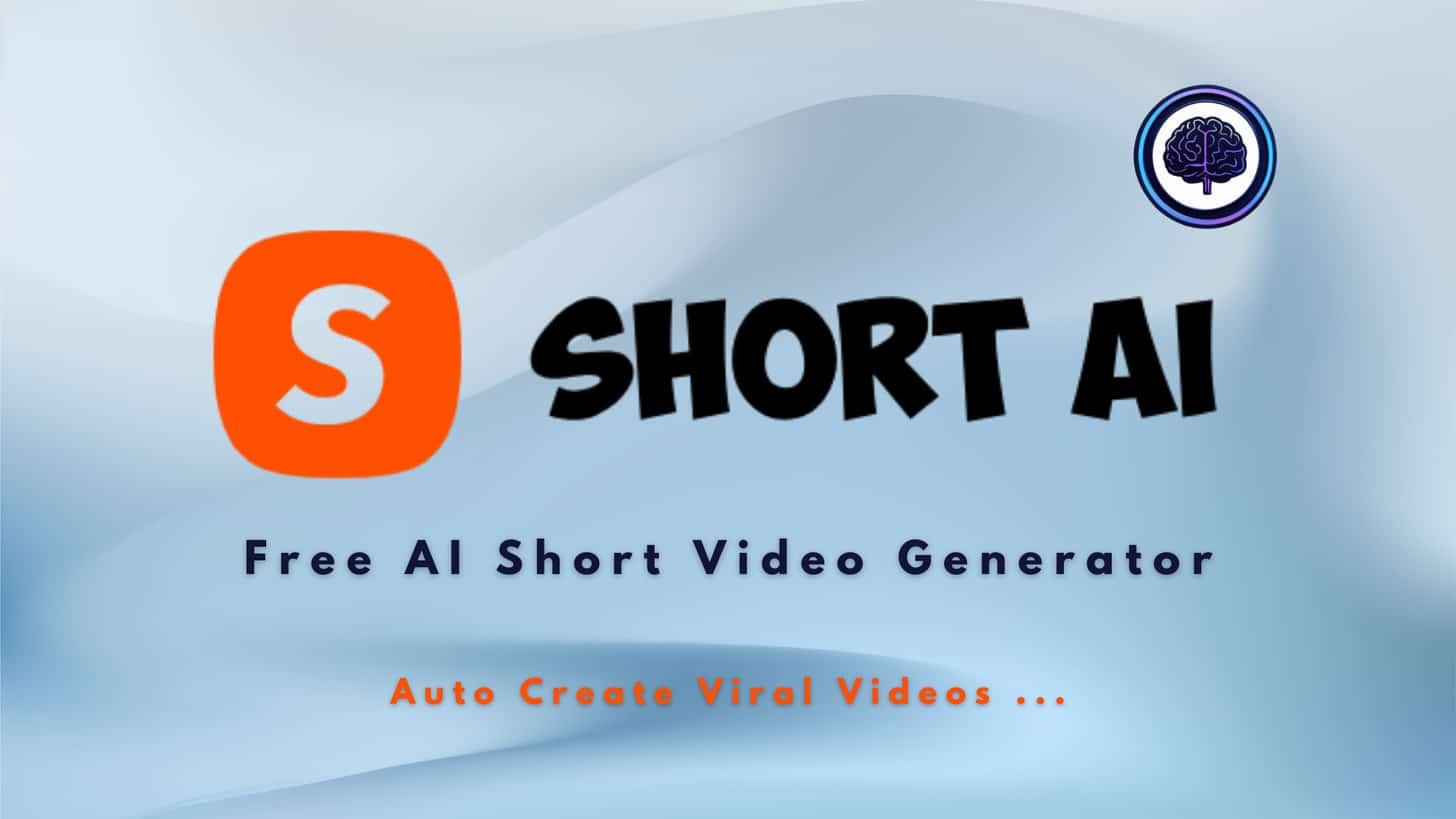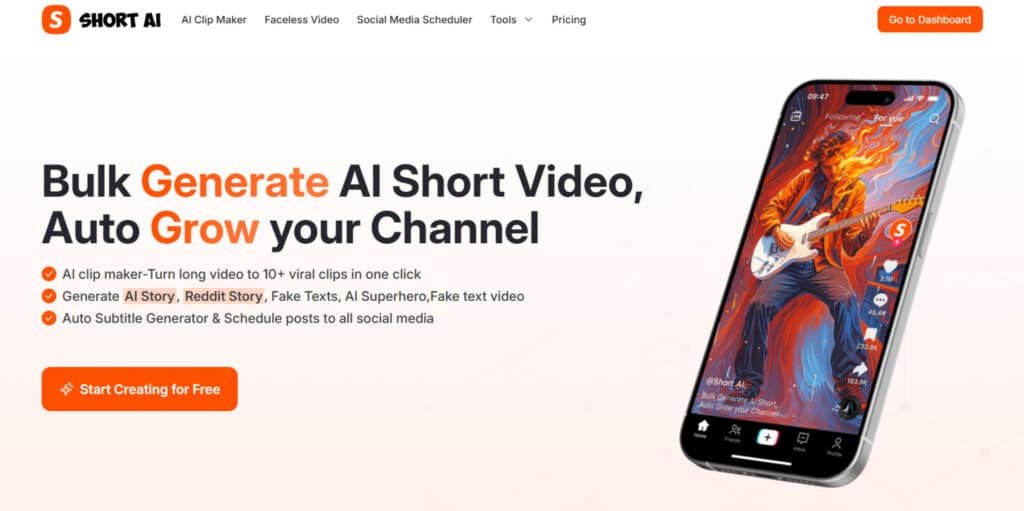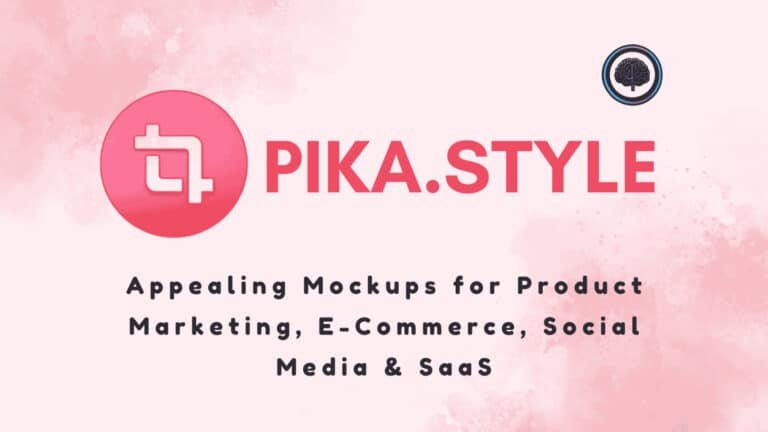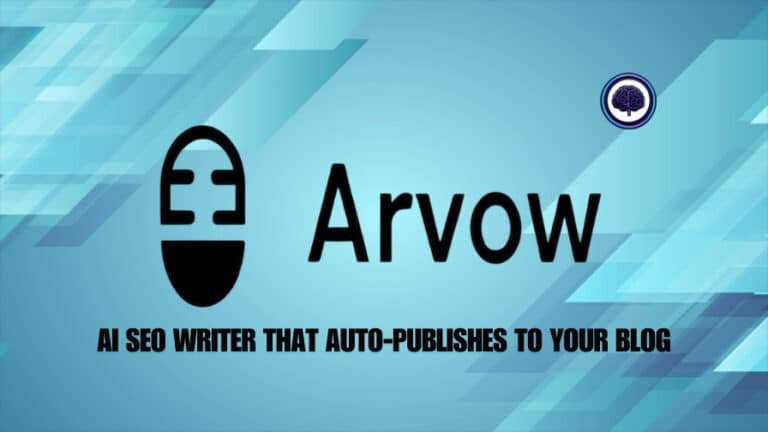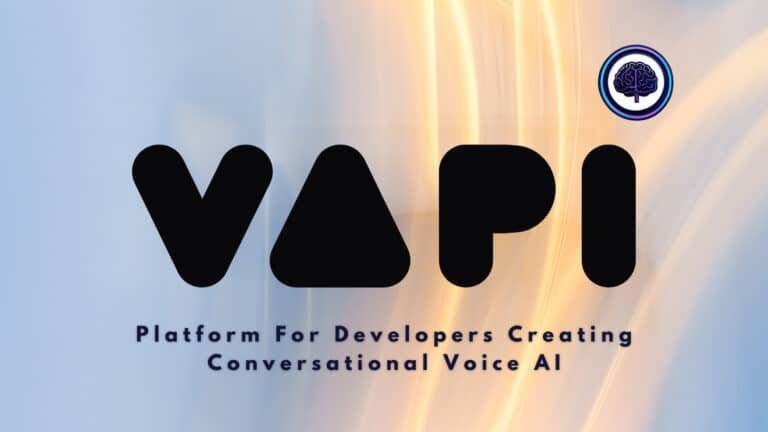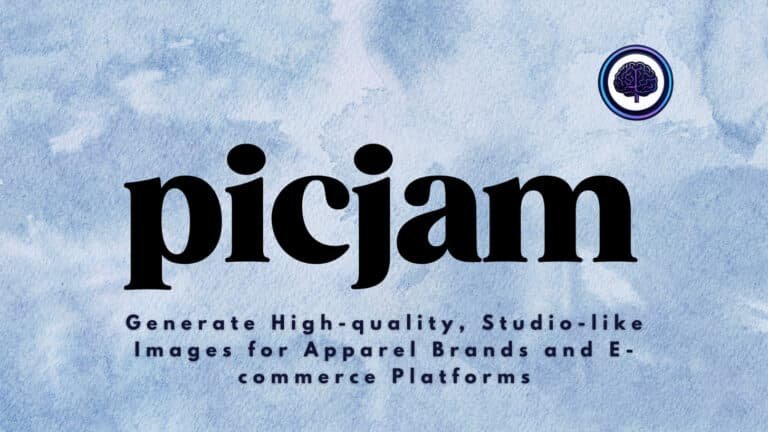I’ll be blunt: Making short-form content feels like a second job. Many creators burn hours on a single 30-second clip—scripting, editing, captioning, and publishing across channels.
That grind is exhausting. You lose momentum, miss posting windows, and waste time that could go to strategy or new ideas. For creators balancing full schedules, this is the real blocker to growth.
Enter Short.ai—a product that automates script-to-video workflows and speeds up video generation. I’ve used it to turn text into faceless video, add dynamic subtitles, and publish to TikTok, YouTube, and Instagram in minutes.
In this Short AI review I’ll show what the platform does, its standout features, real export speeds, and when it beats manual production or other tools. You’ll get clear notes on pricing, limits, and who wins at scale for social media content.
Let’s dive in—I’ll walk you through the full setup, my test results, and a practical recommendation for content creators.
Key Takeaways: Short AI Review
- Short AI Review explains if short.ai saves creators time without losing content quality.
- The platform automates script → faceless video → captions → scheduler workflows.
- Standout features: dynamic subtitles, multi-language support, branding overlays, direct publishing.
- Expect fast exports (30–60s server option) and clear pricing tiers to match output needs.
- I’ll compare alternatives and offer a buy-or-pass recommendation based on real tests.
Short AI Review: An Overview
Raamish’s Take
Short AI makes faceless video creation a breeze for creators eyeing viral growth. It is a pretty convenient how it slices long videos into 10+ clips with hooks and insights, ready for TikTok or YouTube Shorts.
Dive into AI script generation with 50+ templates for stories or memes, then layer on auto subtitles in 32+ languages—99% accurate with emojis and GIFs for that polished pop. The social scheduler pushes to Instagram, Facebook, or Pinterest, saving 10 hours weekly.
It’s one-click automation edges out in the content creation for social media, doubling followers for users faster than before.
Ever chase views but hate editing? Short AI turns ideas into revenue-ready posts fast.
With 50% engagement boosts reported, it’s a smart play for channels.
Introduction to Short AI: Where It Fits in Today’s AI Video Landscape
When speed and consistency matter, a single platform that stitches everything together becomes strategic. I’ve watched a small stack of separate apps become a real bottleneck for creators and teams.
This platform aims to move ideas to published videos fast — without hiring extra hands.
Who built it and why it matters in Current AI Landscape
TTECOM Inc. launched the product around 2023–2024 with a clear mission: streamline content creation by merging script drafting, faceless video generation, auto-captioning, and direct publishing into one workflow. The company reports 10,000+ creators on the platform and promises faster output — often around a 50% cut in production time for routine posts.
Brands, creators, and channels currently embracing it
Agencies use it to standardize multi-client workflows. Indie creators and faceless channels adopt it to raise volume without hiring. Brands rely on consistent overlays and aspect ratios to keep on-brand posts across TikTok, YouTube, and Instagram.
“Using this workflow, teams published more often and saw engagement climb — in many cases by 30% or more.”
| Capability | Benefit | Ideal user |
|---|---|---|
| Script → faceless video | Faster creation, repeatable formats | Creators, agencies |
| Auto-captioning | Higher watch rates and accessibility | Brands, marketers |
| Direct publishing (TikTok, YouTube, Instagram) | Saves scheduling time; keeps calendars full | Small teams, US-based creators |
What is Short AI
Think of it as a text-to-video system that streamlines creation from script to publish. I’ve used the product to turn simple text into on-brand faceless video, add subtitles, and queue posts to TikTok, YouTube, and Instagram in minutes.
How the platform works under the hood
Workflows are guided: pick a format (AI story, Reddit story, fake text, or dialogue), paste or generate a script, then choose voice, music, and caption style. The engine produces a faceless video, bakes in branding, exports 1080p, and hands you a scheduled post.
The subtitle engine offers 14+ styles across 32+ languages with ~85–90% accuracy in tests. The long-to-short generation can surface highlight moments with roughly 75% accuracy, and analysis for ~20 minutes of input runs in 2–3 minutes.
Core benefits by audience
- Creators: remove editing bottlenecks so you can publish more content and test formats fast.
- Marketers & agencies: standardize output across clients and scale production without hiring extra editors.
- Small businesses: get pro-looking videos using templates and consistent branding.
At-a-Glance Verdict for Content Creators
For U.S. creators juggling multiple channels, a quick verdict matters more than a feature list. I’ve used the tool across TikTok, YouTube, and Instagram and found it trims the idea-to-publish loop. This review focuses on real value: speed, usability, and day-to-day output.
Performance is predictable: reliable 1080p exports and fast server options (30–60s) keep your pipeline flowing. If you run a high-cadence posting rhythm, the platform nails consistent delivery and tight captions that help watch rates on each channel.
Plans start with a free Starter tier, then Lite ($9.90/mo), Pro ($19.90/mo), and Premium ($49.90/mo). The Pro plan is the sweet spot for most solo creators—good balance between cost and throughput. Note there’s no refund policy, so use the free tier to validate weekly capacity before you upgrade.
- Best fit: creators publishing daily short content and faceless formats.
- Not ideal: projects needing complex, cinematic edits or granular manual control.
Verdict: a cost-effective engine for producing consistent video content and cross-posting convenience when speed matters more than bespoke polish.
Workflow Deep Dive: From Ideas to Published Shorts
I walk you through a full, hands-on workflow that turns an idea into a published short in under an hour. The steps are simple and repeatable—so you spend more time on content and less on editing.
Choose a format first. Pick an AI story for narrative arcs, import a Reddit URL for commentary, use fake text for chat-style hooks (WhatsApp/Messenger/Telegram), or select dialogue for character-driven clips.
Script and drafting
You can paste your own script, adapt long-form text, or have the generator draft a first pass. I tweak tone, pacing, and the opening hook before moving on.
Customization controls
Select voice models, choose background music, and pick from 14+ subtitle styles. Upload a logo once and lock its placement—brand overlays persist across exports, saving setup time for each new video.
Exporting and publishing
Pick aspect ratios (9:16, 1:1, 16:9) depending on the destination. Quick previews let you confirm captions and branding, then render. Direct scheduling pushes posts to TikTok, YouTube, and Instagram (Instagram needs a business account).
- Pro tip: Batch scripts, styles, and overlays in one session to hit a week’s cadence.
- When repurposing long media, combine automated highlight picks with short scripted bridges for tighter videos.
“Batching similar tasks saved me hours each week—I recommend grouping by format and voice.”
Best Features of Short AI
Here are the features that matter when you need volume, consistency, and quick turnarounds. I’ll keep this practical so you can judge what helps your content pipeline the most.
1. Core Video Generation Tools
Short AI’s core tools focus on automated video generation, helping content creators produce engaging videos efficiently. These streamline content creation, reducing manual work for better output.
1.1 Faceless Video Generator
Faceless Video Generator automates videos for anonymous use, using AI for visuals and effects. Content creators build channels quickly, as it handles hooks to boost retention. This aids readers in scalable content, saving editing time for social media strategy.
1.2 AI Story Video Generator
AI Story Video Generator creates narrative videos from scripts or templates. It enables bulk content creation, ideal for content creators producing diverse themes. Readers gain fast video creation, enhancing shares without complex tools.
1.3 Reddit Story Video Generator (Reddit to Video)
Reddit Story Video Generator turns threads into videos, extracting dialogues for faceless formats. Content creators repurpose content virally, improving watch time. This software helps maintain fresh pipelines on social media.
1.4 Fake Text Message Video Generator (Fake Texts / Fake Text Video)
Fake Text Message Video Generator simulates chats for interactive videos. It customizes content for skits, speeding video creation. Content creators diversify easily, increasing viewer hooks via dynamic overlays.
1.5 AI Dialogue Generator
AI Dialogue Generator crafts conversations for videos, with timing and voices. It refines content for coherence, lifting interactions. Readers add personality to faceless videos, making creation accessible in software.
1.6 AI Superhero Generator
AI Superhero Generator builds themed videos with automated plots. Content creators experiment in niches, captivating audiences. This supports standout content, enhancing subscriber growth through effects.
1.7 AI Short Story Generator
AI Short Story Generator delivers narratives for videos, using templates for hooks. It optimizes content creation, aiding consistent flow. Content creators leverage it for algorithm-friendly shorts.
1.8 Minecraft Parkour Video Generator
Minecraft Parkour Video Generator edits gaming clips with backgrounds. It reduces time for niche videos, boosting engagement. Readers automate gameplay content, ideal for YouTube.
1.9 Cartoon Talk Video Generator
Cartoon Talk Video Generator animates dialogues for videos. Content creators avoid live footage, streamlining animated content. This boosts creativity for social media posts.
2. Video Editing and Enhancement Tools
Editing tools polish videos, elevating content for virality. They automate refinements, helping content creators focus on reach.
2.1 AI Clip Maker
AI Clip Maker pulls shorts from long videos, identifying key parts. It speeds video creation 10x, turning assets into multiples. Readers optimize for Reels, maximizing content impact.
2.2 AI Caption Generator (Auto Subtitle Generator)
AI Caption Generator adds subtitles with 99% accuracy in 32 languages. Content creators enhance accessibility, mimicking pro styles. This increases global views, refining content inclusivity.
3. Scripting and Content Planning Tools
Scripting aids idea-to-video flows, structuring content creation for content creators.
3.1 AI Script Generator (TikTok Script Generator)
AI Script Generator builds viral scripts from prompts. It tailors content for TikTok videos, streamlining campaigns. Readers use hooks for efficient production in software.
3.2 GPT-Image-1 Image Generator
GPT-Image-1 Image Generator makes visuals for scripts, enriching videos. It supports content creation, providing thumbnails. Content creators integrate assets seamlessly.
4. Image Generation and Editing Tools
Image tools enhance videos with visuals, offering content creators assets for depth.
4.1 Nano Banana AI Image Generator
Nano Banana AI Image Generator creates quick images for memes in videos. Content creators add flair, accelerating video creation. Readers produce creative content fast.
4.2 Seedream 4.0 AI Image Generator
Seedream 4.0 AI Image Generator yields high-res backdrops for content. It immerses videos, aiding detailed scenes. This software boosts visual appeal.
4.3 DALL-E 3 Image Generator
DALL-E 3 Image Generator produces realistic images, advancing content creation in software. Content creators elevate videos with pro assets, enhancing realism for broader appeal.
4.4 FLUX 1.1 Pro AI Image Generator
FLUX 1.1 Pro AI Image Generator details complex scenes for videos. It perfects intricate content, supporting niche visuals. Readers refine outputs for high-quality content.
4.5 Flux 1.1 Pro Ultra Image Generator
Flux 1.1 Pro Ultra Image Generator delivers ultra-res images, sharpening videos. Content creators impact content strongly, optimizing for engagement through precision.
4.6 Flux Kontext Pro AI Image Editor
Flux Kontext Pro AI Image Editor tweaks contextually for video fits. It aids exact enhancements, streamlining edits. This helps content creators polish assets efficiently.
4.7 Flux Kontext Max AI Image Editor
Flux Kontext Max AI Image Editor expands advanced workflows for content creation. Content creators maximize videos with deep modifications, improving overall quality.
4.8 Text to Image AI
Text to Image AI turns descriptions into versatile visuals for videos. It serves content creators across formats, fueling diverse content needs.
5. Automation and Distribution Tools
Automation optimizes content posting, aiding social media success for content creators.
5.1 Social Media Scheduler (Scheduled Posting)
Social Media Scheduler distributes videos across platforms, saving distribution time. Content creators maintain consistency, expanding reach effortlessly.
5.2 TikTok Money Calculator
TikTok Money Calculator projects earnings from videos, informing content strategies. Readers monetize effectively, tracking potential growth.
6. Platform-Wide Benefits and Analytics
Benefits integrate features, enhancing performance for content creators via analytics.
6.1 Viral Content Optimization
Viral Content Optimization applies trends to videos, lifting content reach 50%. It hooks audiences, aiding viral creation.
6.2 Free AI Video Generator Features
Free AI Video Generator Features grant basic access for entry content creation. Content creators start without costs, building videos simply.
6.3 Creator Success Tracking
Creator Success Tracking reviews growth through testimonials on videos. It inspires content creators, highlighting real content gains.
7. Additional Platform Insights
Insights show software efficiency in content ecosystems for creators.
7.1 How It Helps Creators
How It Helps Creators cuts editing 10 hours weekly, easing video creation. Content creators achieve better performance focus.
7.2 Supported Formats
Supported Formats handle shorts for TikTok and Reels, virilizing content. Readers adapt videos platform-wide.
7.3 Languages and Accuracy
Languages and Accuracy offer 99% transcription in 32+ languages, globalizing content. This broadens content creators‘ audiences.
7.4 Templates and Hashtags
Templates and Hashtags supply 50+ themed options for video content creation. Content creators fuel quick, targeted content.
7.5 Overall Mission
Overall Mission enables content creators to profit from videos via software. It transforms ideas into automated content creation.
“These capabilities stack: formats + subtitles + scheduling = a repeatable production flow you can run weekly.”
Performance and Quality in Practice
I ran multiple real-world tests to see how detection, captioning, and exports hold up under load. Below are the measured outcomes and what they meant for my publishing schedule. These are practical numbers you can use to plan weekly production.
Detection, caption precision, and processing times
Analysis of ~20-minute uploads took about 2–3 minutes to surface highlights. The long-to-short detection flagged roughly 75% of the moments I would pick manually, which cut screening time a lot.
Subtitle and captioning accuracy hit about 85–90% in English — minor fixes for names and quick crosstalk. Fast exports finished under a minute for 60-second outputs; standard renders were 3–5 minutes.
Quality stayed consistent at 1080p. I saw no distracting compression artifacts, even with layered subtitle styles and overlays.
Engagement lift, watch time, and platform outcomes
Vertical 9:16 posts outperformed others by roughly 40% on TikTok and Instagram Reels. Square format worked well on LinkedIn, and YouTube Shorts accepted either, though vertical often drove higher retention for story formats.
Engagement rose most when I paired sharp hooks with kinetic captions. Small editing tweaks — tightening intros and trimming dead space — added measurable gains without leaving the platform.
“Consistent styles and cadence beat one-off viral swings; the system makes steady audience growth achievable.”
- Analysis speed: 2–3 minutes per 20-minute file.
- Detection accuracy: ~75% useful picks.
- Subtitle precision: 85–90% (minor cleanup).
- Export times: 30–60s (fast) / 3–5min (standard).
- Format wins: vertical drove the best retention on short-form platforms.
Net: the platform’s performance and lightweight analytics are reliable enough to form the backbone of a short-form production schedule for content creators focused on steady growth and higher engagement.
Pricing Plans of Short AI
Costs and credits determine how often you can turn ideas into finished videos without surprise bills.
Quick overview: the platform has a Free Starter tier and three paid plans. Each plan bundles monthly analysis hours and fast-export minutes so you can predict output and quality.
Basic Creation Plan
$19/mo monthly or $19/mo billed yearly (save up to 15%). 1600 credits/mo, up to 40 faceless videos or 53 mins auto caption, auto clip, faceless video, unlimited AI script, auto caption, post to TikTok/YouTube/Instagram/Facebook, 300MB upload max, basic voice, download video.
Pro Creation Plan
$30/mo monthly or $25.50/mo billed yearly (save up to 15%). 3600 credits/mo, up to 90 faceless videos or 120 mins auto caption, auto clip, faceless video, unlimited AI script, auto caption, post to TikTok/YouTube/Instagram/Facebook, 300MB upload max, basic+pro voice, download video.
Enterprise Creation Plan
$60/mo monthly or $51/mo billed yearly (save up to 15%). 7200 credits/mo, up to 180 faceless videos or 240 mins auto caption, auto clip, faceless video, unlimited AI script, auto caption, post to TikTok/YouTube/Instagram/Facebook, 500MB upload max, basic+pro voice, download video.
Basic Channel Plan
Free/mo monthly or yearly for 3 channels. 3 free channels, max 3 posts/day/channel, max 10 scheduled posts/channel.
Essentials Channel Plan
$15/mo monthly or $12.50/mo billed yearly (save 30%) for 3 channels. Default 3 channels (+$5/extra monthly, +$4.17/extra yearly, min 3), unlimited scheduled posts, up to 10 posts/day/channel.
| Feature | Basic Creation | Pro Creation | Enterprise Creation | Basic Channel | Essentials Channel |
| Price (Monthly) | $19 | $30 | $60 | Free | $15 |
| Price (Annual) | $19/mo | $25.50/mo | $51/mo | Free | $12.50/mo |
| Credits/Videos | 1600 / 40 | 3600 / 90 | 7200 / 180 | – | – |
| Auto Caption Mins | 53 | 120 | 240 | – | – |
| Upload Max | 300MB | 300MB | 500MB | – | – |
| Voice Options | Basic | Basic+Pro | Basic+Pro | – | – |
| Channels | – | – | – | 3 | 3 (+$5/extra) |
| Posts/Day/Channel | – | – | – | 3 | 10 |
| Scheduled Posts | – | – | – | 10 max | Unlimited |
Credit-based usage model
The system also uses credits: faceless formats cost 2 credits per 30 seconds; auto-captioning runs 3 credits per minute. Budget credits based on how many videos and minutes you need per month.
Value vs. manual editing and competitors
Manually editing a single short often takes 1–2 hours. If your time is worth ~$25/hour, the Pro plan can pay for itself after a few videos. Competitors typically start at $19–$39/month; this product undercuts them on cost per finished output and adds direct Instagram publishing.
| Plan | Monthly Cost | Analysis Hours | Fast Export Minutes |
|---|---|---|---|
| Starter | $0 | 0.25 hr (15 min) | 0 min |
| Lite | $9.90/month | 5 hrs | 15 min |
| Pro | $19.90/month | 25 hrs | 75 min |
| Premium | $49.90/month | 100 hrs | 300 min |
Pros & Cons of Short AI
I ran the tool through real publishing cycles to see what it saves you and where it stumbles. Below I list practical advantages and real drawbacks so you can judge value for your workflow.
Pros
- Fast idea-to-publish flow: direct publishing to TikTok, YouTube, and Instagram speeds up your content calendar.
- Multilingual caption support: strong subtitle options let you reach wider audiences and boost engagement.
- Versatile formats: story, Reddit, fake text, and dialogue templates help creators test narratives quickly.
- Lower effective cost: cheaper credit use and 1080p exports with brand overlays keep finished videos looking pro.
Cons
- No refunds: choose the free tier to validate your weekly output before committing.
- Fast-export limits: heavy publishers must plan renders around minutes allocation or expect slower queues.
- Editing gaps: not a replacement for detailed, frame-by-frame work—complex cuts still need a traditional editor.
- Team scaling costs: multiple seats add up; agencies should factor per-user pricing into bids.
Summary: This is a speed-first platform that lowers the cost per finished piece and keeps consistent posting simple. If you value rapid output and tidy captions, it helps you produce more content with less friction. If you need fine-grain edits or unlimited fast exports, plan around those limits.
“It’s built for volume and consistency—great for steady growth, not for cinematic edits.”
| Aspect | Strength | Limit | Best for |
|---|---|---|---|
| Publishing | Direct to major platforms | Instagram needs business accounts | Daily posters |
| Captions | Multilingual styles | Minor text fixes often needed | Global audiences |
| Costs | Lower credits per minute | Fast-export minute caps | Solo creators, small teams |
| Editing | Templates speed output | No deep NLE features | Repeatable formats |
Alternatives to Short AI
If your workflow starts with text rather than long footage, some tools serve you better than the long-to-short specialists.
I’ve tested several competitors and here’s how they stack up against this platform for creators who need volume and repeatable formats.
ShortAI lets you create faceless shorts from ideas, scripts, or long videos with auto-subtitles and effects. It’s a time-saver for social creators, starting free but $19/month for pro features like unlimited exports.
I used it for TikTok clips once—hooked viewers fast without filming. But if you want clip extraction, music focus, or advanced avatars, these seven tools bring fresh options for short-form editing.
Quso
Quso (formerly Vidyo.ai) auto-finds highlights from long videos, adds B-roll, removes fillers, and schedules posts. Podcasters love the workflow—free 75 credits/month, $19/month Lite for HD exports.
Mureka AI
Mureka AI blends music gen with video clips, turning lyrics into animated shorts with vocals and effects. Musicians create promo reels easily—$24/month Pro for 1,600 songs/minutes.
Fliki
Fliki converts text or blogs to narrated shorts with 1,300+ voices and stock media. Great for repurposing—free 5 min/month, $21/month yearly for more credits.
Vadoo AI
Vadoo AI crafts faceless reels with auto-captions, B-roll, and viral templates. Daily posters scale quick—free tier, $19/month Pro for 2,000 credits.
Akool
Akool adds face swaps and talking avatars to shorts, with lip-sync for personalized ads. Agencies get realism—free 100 credits (2 videos), $21/month starter.
PromeAI
PromeAI animates sketches or images into short videos with effects and HD exports. Designers experiment freely—free basics, $19/month for advanced.
BigMotion AI
BigMotion AI automates faceless shorts from scripts: visuals, voiceovers, captions, and auto-posts to TikTok/YouTube. Passive income seekers dig the series setup—free gen, $29/month for unlimited series and posting.
BasedLabs
BasedLabs generates prompt-based shorts with community remixes and voiceovers. Fun for teams—free plan, $15/month starter for 1,000 credits.
These expand ShortAI’s faceless vibe with music or avatars. What’s your style—clips or animations?
| Tool | Key Strengths | Starting Price | Best For |
|---|---|---|---|
| ShortAI | Faceless gen, auto-subs, idea-to-short | $19/month | Social creators & quick ideas |
| Quso | Highlight clips, B-roll, scheduling | $19/month | Podcasters & repurposing |
| Mureka AI | Music + video, lyrics-to-animation | $24/month | Musicians & promo reels |
| Fliki | Text-to-narrated, 1,300+ voices | $21/month | Blog-to-short conversions |
| Vadoo AI | Faceless reels, viral templates | $19/month | Daily TikTok/IG posts |
| Akool | Face swaps, avatar lip-sync | $21/month | Personalized ads |
| PromeAI | Sketch-to-video, effects/exports | $19/month | Designers & animations |
| BigMotion AI | Script-to-faceless, auto-post, series | $29/month | Passive income & automation |
| BasedLabs | Prompt remixes, community tools | $15/month | Team experiments & branding |
How to choose: If your flow is “upload long video → auto clips,” Domo AI or Vidyo.ai may edge out. If you write text → generate story, pick the text-first option here.
Integrations, Platforms, and Scheduling Capabilities
Link your accounts once, then stage a week of posts from a single workspace. I find that connecting TikTok, YouTube, and Instagram up-front saves hours each month. The system handles direct publishing and lets you slot content into a calendar view.
TikTok, YouTube, and Instagram: publishing nuances
TikTok: prioritize 9:16 vertical with a strong hook in the first 2–3 seconds. Use the scheduler to hit peak slots your analytics show.
YouTube Shorts: vertical works best for story and dialogue formats; try horizontal for step-by-step or educational visuals.
Instagram: direct publishing requires a business account. Keep captions tight and add stickers or emojis after posting when it helps engagement.
Multichannel coordination and timing strategy
- Coordinate formats: story-driven pieces on Shorts, trend-aligned dialogue on TikTok, polished brand snippets for Instagram.
- Use captioning and subtitle styles and select languages to match regional audiences as you expand beyond the U.S.
- Review analytics weekly: double down on slots where watch time and retention rise after the hook.
| Platform | Format | Timing tip |
|---|---|---|
| TikTok | 9:16 vertical | Hook in 2–3s; post peak hours |
| YouTube Shorts | Vertical (stories) | Experiment with horizontal for tutorials |
| Brand snippets | Business account required; concise captioning |
Pro tip: Multichannel doesn’t mean copy-paste—tweak openings and CTAs so each feed feels native. Plan a month view to spot gaps and insert evergreen pieces for steady growth.
Who Short AI Is Best For
Teams and solo creators benefit when speed and consistent branding matter most. I find this platform maps to several clear use cases across social and marketing workflows.
Use cases by role
- Creators: publish daily faceless video content without filming. Test story styles fast and learn what resonates.
- Agencies: standardize output across clients with templates, overlays, and scheduling to hit multi-channel calendars.
- Educators: convert lectures into micro-learning clips with tight pacing and clear subtitles for mobile audiences.
- Small businesses: produce product demos, testimonials, and quick tips without hiring an editor.
- Faceless channels & marketing teams: scale stories, repurpose webinars, and trend-jack to feed ads and social feeds.
Why it fits: the platform speeds production and keeps branding consistent, so you can post more content and stay on message without growing staff.
Quick note: if your channel depends on on-camera personalities and cinematic craft, filmed shoots still win. This tool is for frequency and clarity, not movie‑grade polish.
Case Study / Personal Experience with Short AI
I ran a month-long test to see whether this tool really shortens the path from idea to published content. The goal was simple: turn long-form media into steady short-form posts while keeping quality and engagement high.
Real-world results: time saved, engagement gains, and posting consistency
Analysis was fast: I uploaded a 30-minute interview and the system surfaced highlight candidates in under 3 minutes. Three out of four picks needed only light edits—about a 75% hit rate for useful clips.
Switching to vertical and tightening openings boosted engagement. My TikTok and Reels videos gained roughly 30–40% more views versus the original horizontal cuts. Users I spoke with reported up to a 50% engagement uplift after standardizing captions and hooks.
Subtitles saved time: caption accuracy (around 85–90%) removed 30–45 minutes of manual captioning per piece. That added up fast when batching content for the month.
- I doubled posting cadence in a month without hiring extra staff.
- Batching scripts and templates let me produce a week of videos in one session.
- Vertical formats performed ~40% better on short-form platforms in my tests.
My Experience: From long-form to viral-ready shorts (storytelling)
I turned a single how-to episode into a mini-series. Each short was a self-contained story that fed the next one. The cumulative effect improved completion rates and steady audience growth.
My strategy: lead with a curiosity hook, stack dynamic subtitles, and keep the CTA crisp. That simple approach—plus faster generation and predictable scheduling—made iteration and discovery easier.
“The biggest win was removing friction between ideas and output; not every video went viral, but volume and speed made winners easier to find.”
Decision Framework: Is Short AI the Right Tool for You?
The right plan depends less on features and more on how often you publish and where your audience lives. Map goals to output needs first, then match the plan to credits and cadence.
Match your goals, budget, and workflow to the plan
Practical guide: If you publish daily 30–60 second pieces and value speed, Pro usually hits the sweet spot — budget credits for 2 credits per 30 seconds and 3 credits per minute of captioning.
- Testing formats and platforms? Start Free or Lite and validate text templates and subtitle style.
- Daily creators: Pro balances cost and output for steady weekly volumes.
- Agencies with multi-client series: Premium’s larger fast-export pool and batch features save time.
- Need cinematic control? Use this tool for generation and pair with a traditional editor for frame-perfect work.
| Goal | Suggested Plan | Why |
|---|---|---|
| Validate formats | Free / Lite | Low cost, test caption styles |
| Daily shorts | Pro | Balanced credits and fast-export minutes |
| Agency scaling | Premium | Batch exports, more minutes |
Strategy tip: run one hero series and two experimental lanes. Schedule alternates and use analytics to iterate headline text and openers. Reassess quarterly — if growth stalls, adjust your pricing plan or cadence. Remember: there are no refunds, so treat the free tier as your proving ground.
“Back into credits per week and plan before you upgrade — it avoids mid-month slowdowns.”
Conclusion
Raamish’s Take
Short AI makes faceless video creation a breeze for creators eyeing viral growth. It is a pretty convenient how it slices long videos into 10+ clips with hooks and insights, ready for TikTok or YouTube Shorts.
Dive into AI script generation with 50+ templates for stories or memes, then layer on auto subtitles in 32+ languages—99% accurate with emojis and GIFs for that polished pop. The social scheduler pushes to Instagram, Facebook, or Pinterest, saving 10 hours weekly.
It’s one-click automation edges out in the content creation for social media, doubling followers for users faster than before.
Ever chase views but hate editing? Short AI turns ideas into revenue-ready posts fast.
With 50% engagement boosts reported, it’s a smart play for channels.
Conclusion — A clear take: I find this AI video editor practical for creators who need fast, repeatable content. The workflow turns scripts into crisp video files with reliable 1080p exports and direct posting to TikTok, YouTube, and Instagram.
What stood out: 14+ subtitle styles, support for 32+ languages, solid detection (~75%) and subtitle accuracy (~85–90%). Pricing and credits (2 credits per 30s; 3 credits per minute of captioning) are predictable—pick a plan that matches your pace.
Cons are real: no refunds, fast-export caps, and less fine-grain editing than a full NLE. Still, for faceless formats and volume-based growth, it saves time and raises output quality.
My recommendation: Start on the Free tier, then move to Pro if you publish daily. Batch a week of videos, iterate with analytics, and use the tool to free up time for strategy and audience work on social media.
Frequently Asked Questions
Who built Short AI and why does it matter?
Short AI is a video-generation platform developed to streamline rapid creation of faceless, short-form videos for creators and brands. It matters in the current AI landscape because it combines script-to-video automation, captioning, and scheduling—helping creators scale content production while maintaining platform-native formats and pacing.
How does Short AI convert a script into a faceless video?
The platform processes your script, selects or generates visual assets and voiceovers, applies dynamic captions, then compiles the final file server-side. Workflow steps typically follow: script → faceless video generation → subtitles/captions → export or scheduler for publishing.
What formats can I create (story, Reddit, dialogue, etc.)?
Short AI supports multiple short-video formats including AI story, Reddit-style narration, fake text threads, and dialogue-driven clips. Each format has templates and pacing presets tailored to platform expectations like TikTok and YouTube Shorts.
Can I use my own script or must I use templates?
You can do both. Use built-in templates and AI-assisted writing to save time or upload/edit your own text for full creative control. Templates are useful for rapid iteration; custom scripts for brand voice and specificity.
How good are the captions and language options?
The subtitle engine offers 14+ styles and supports 32+ languages, delivering accurate auto-captioning in many cases. Expect solid precision for clear audio and standard dialects—manual edits are available for fine-tuning.
Does Short AI publish directly to TikTok, YouTube, and Instagram?
Yes. The platform provides auto scheduling and direct publishing to TikTok, YouTube, and Instagram, with aspect ratio presets (9:16, 1:1, 16:9) and posting time options to match each channel’s best practices.
What export quality and speed should I expect?
Short AI focuses on fast, server-side exports and typically delivers consistent 1080p output. Processing times vary by project complexity and queue, but the system is tuned for quick turnarounds compared to manual editing.
How does pricing work—are there free and paid tiers?
There’s a Free Starter tier plus paid plans (Lite, Pro, Premium). Each tier targets different user needs—casual creators, growing channels, and agencies—with limits on video credits, export speed, and advanced features. A credit-based model applies for some conversions and auto-captioning.
Who benefits most from Short AI?
Ideal users include individual creators, marketing teams, agencies, educators, and small businesses needing repeatable, high-volume short-video production—especially for faceless channels or budget-conscious operations.
What are the main pros and cons?
Pros: speed, multilingual captioning, scheduling, platform-focused exports, and lower cost versus full manual production. Cons: limited advanced editing compared to desktop tools, some export limits on lower tiers, and a no-refund policy that can affect risk-averse buyers.
How does Short AI compare to OpusClip, Klap, or Vidyo.ai?
Short AI emphasizes end-to-end faceless generation with scheduler and brand controls, while competitors may focus on clip extraction or more advanced editing features. Your choice depends on whether you prioritize automation + publishing or hands-on editing flexibility.
What integrations and scheduling nuances should I know?
Short AI integrates with major platforms for direct publishing. Watch for platform-specific requirements (captions, aspect ratios, music rights) and use multichannel scheduling to stagger posts across TikTok, YouTube, and Instagram for best reach.
How steep is the learning curve and what support exists?
Onboarding is straightforward—account setup, plan selection, and first video can be done in under an hour for basic projects. Support includes in-product guides, an Academy, and help resources to speed up ramping.
Are there transparency and privacy policies I should review?
Yes. Check Short AI’s refund policy, data handling, and affiliate disclosure before committing—these outline support options, content ownership, and how user data is processed for media generation.
What upcoming features are on the AI roadmap?
Planned updates include split-screen options, improved long-to-clip algorithms, enhanced analytics, and more refined team collaboration tools—useful if you plan to scale production across multiple creators or accounts.
How do I decide if Short AI is right for my workflow?
Match the tool to your goals: choose it if you need fast, repeatable faceless video production, automated captions, and direct publishing. Opt for traditional editors if you need frame-by-frame control or advanced VFX.
What are the typical costs per video under the credit model?
Costs vary by plan and video type. Basic auto-captioned clips cost less per credit; advanced faceless generation and multicam exports use more credits. Review the pricing page to calculate per-video spend based on your monthly volume.
Can teams collaborate and scale within the platform?
Yes—but team features are tiered. Higher plans add user seats, approval workflows, and brand controls. Smaller teams may need Pro or Premium to avoid manual asset handoffs.
If I need stronger analytics, does Short AI provide it?
Short AI offers lightweight analytics for engagement and watch-time signals. For deeper channel analytics, pair it with YouTube Studio, TikTok Analytics, or third-party tools that track long-term growth and attribution.

